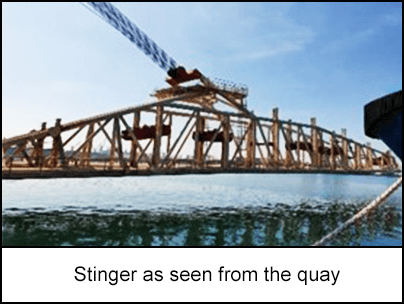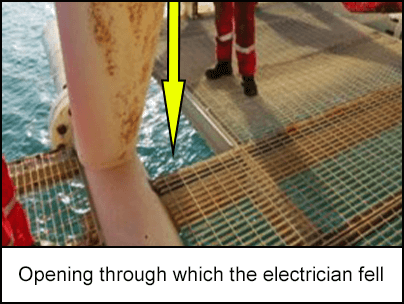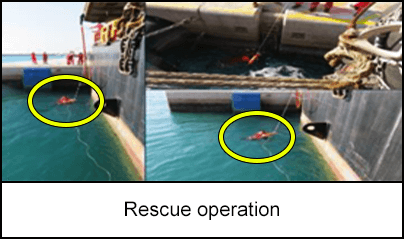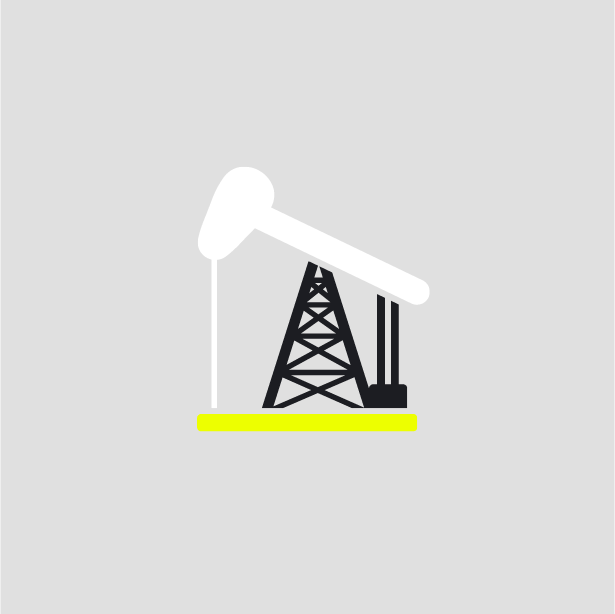-
What happened?
Three electricians were conducting function checks on a new roller box camera on a stinger (situated alongside a vessel in port).
One of the electricians fell 2 metres (6.5 feet) into the water through an opening in the stinger floor grating.
They remained conscious and were able to swim to a lifebuoy that had been pre-deployed.
They were recovered via the quayside ladder and given first aid treatment for minor scratches received during the fall.

-
Why did it happen?
A previous inspection identified damage to handrails and grating, but it was considered low priority as the area was not accessed regularly. Remedial work was neither planned, nor immediately actioned.
The task was considered ‘routine and simple’ – workers did not have a toolbox talk (TBT), only a pre-shift briefing.
The team observed the unsafe conditions but did not stopped the work, and did not trigger a management of change (MoC) procedure.
The controls identified in the risk assessment were not verified by supervisors on site.
The permit to work (PTW) was authorised without confirmation of control measures.
A requirement to move the vessel stopped the work being completed at quayside, which would have removed the fall potential.

-
What did they learn?
Ensure adequate planning and risk assessment before starting work.
Conduct a review of the work area before starting to ensure the specified controls provide safe working conditions.
Emphasise that stopping the work when unsafe conditions are being observed is everyone’s responsibility and obligation.
Ensure all workers are aware that the risks of falling overboard should be considered for work near, and over, the side of vessels.

-
Ask yourself or your crew
What risk assessments do you carry out before starting work?
What should you do if you observe faulty/loose gratings and handrails?
What is your management of change process, and when can you trigger it?
What are the hazards of working over water/on the side of vessels?
What measures do we have in place to prevent this from happening here? How can we improve?

Add to homescreen
Content name
Select existing category:
Content name
New collection
Edit collection
What happened?
Three electricians were conducting function checks on a new roller box camera on a stinger (situated alongside a vessel in port).
One of the electricians fell 2 metres (6.5 feet) into the water through an opening in the stinger floor grating.
They remained conscious and were able to swim to a lifebuoy that had been pre-deployed.
They were recovered via the quayside ladder and given first aid treatment for minor scratches received during the fall.

Why did it happen?
A previous inspection identified damage to handrails and grating, but it was considered low priority as the area was not accessed regularly. Remedial work was neither planned, nor immediately actioned.
The task was considered ‘routine and simple’ – workers did not have a toolbox talk (TBT), only a pre-shift briefing.
The team observed the unsafe conditions but did not stopped the work, and did not trigger a management of change (MoC) procedure.
The controls identified in the risk assessment were not verified by supervisors on site.
The permit to work (PTW) was authorised without confirmation of control measures.
A requirement to move the vessel stopped the work being completed at quayside, which would have removed the fall potential.

What did they learn?
Ensure adequate planning and risk assessment before starting work.
Conduct a review of the work area before starting to ensure the specified controls provide safe working conditions.
Emphasise that stopping the work when unsafe conditions are being observed is everyone’s responsibility and obligation.
Ensure all workers are aware that the risks of falling overboard should be considered for work near, and over, the side of vessels.

Ask yourself or your crew
What risk assessments do you carry out before starting work?
What should you do if you observe faulty/loose gratings and handrails?
What is your management of change process, and when can you trigger it?
What are the hazards of working over water/on the side of vessels?
What measures do we have in place to prevent this from happening here? How can we improve?
Three electricians were conducting function checks on a new roller box camera on a stinger (situated alongside a vessel in port). One of the electricians fell 2 metres (6.5 feet) into the water through an opening in the stinger floor grating.














